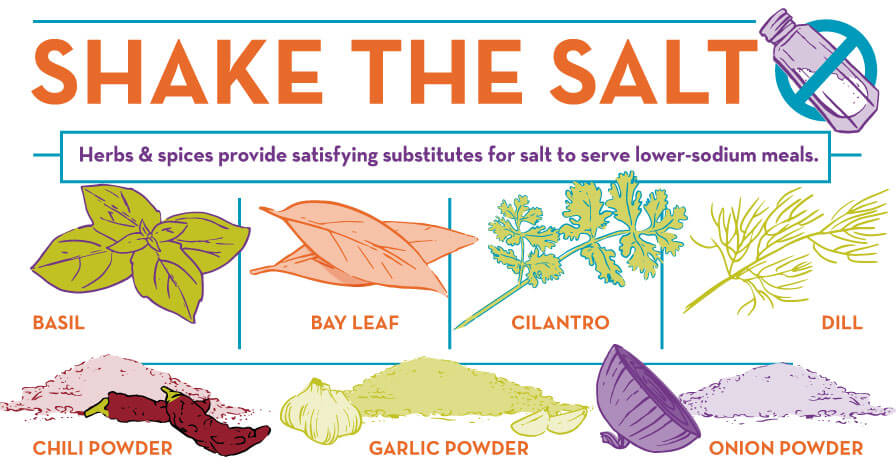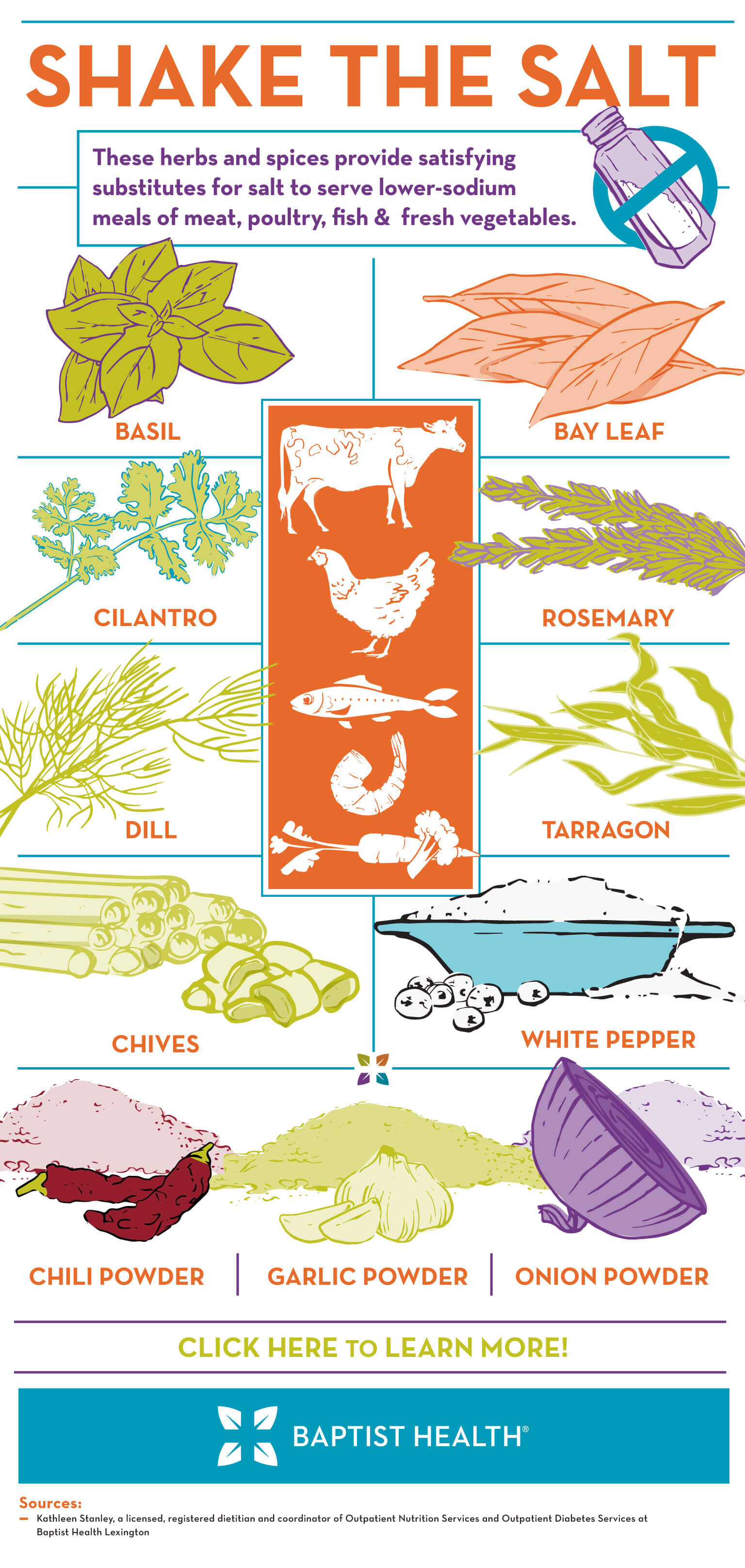Tips to Lower Your Salt Intake

Research shows most Americans eat more sodium than they need, and getting too much in your diet may increase your risk for high blood pressure, heart disease, and stroke, and cause other health problems.
The latest USDA Dietary Guidelines recommend limiting sodium intake each day to 2,300 mg or less. However, if you are at risk for health problems or have health problems such as hypertension or diabetes, the American Heart Association, and the American Diabetes Association recommends consuming less than 1,500 mg each day. Ask your doctor what level is right for you.
Flavorful Salt Substitutes
According to Kathleen Stanley, a licensed, registered dietitian and coordinator of Outpatient Nutrition Services and Outpatient Diabetes Services at Baptist Health Lexington, fresh herbs and pure spices contain very little sodium and are a great substitute for seasoning foods in place of salt. Use these to cook lean meats and fresh vegetables, creating healthier, lower-sodium meals from scratch.
You can also mix some custom blends to create your own seasonings. Explore your spice cabinet and select those that contain no added sodium — for example, choose onion powder, instead of onion salt. A good base may include an equal mix of black pepper, white pepper, and onion powder. Then, you can experiment by adding other flavors to taste. Use caution with salt substitutes containing potassium — consult your physician to see if these are safe for your health condition before using.

Surprising Foods that are High Sodium
While much of our sodium consumption comes from salt, many of the foods we eat contain sodium levels that are surprisingly — and dangerously — high. Reading labels can help you reveal these sources of sodium in many pre-packaged, processed, instant, and prepared foods, including salted snacks, cured meats, pickled foods, convenience items, frozen dinners, canned meats, canned and instant soups, and condiments. Here are some that you may not expect:
- Cottage cheese. Sure, cottage cheese is a great source of calcium and protein, but with it comes a large amount of sodium. A normal 1/2 cup serving of 1-2% low-fat cottage cheese clocks in at 450 milligrams of sodium – a whopping 19% of your recommended daily allowance!
- Canned vegetables. Opening up a can of veggies as a side or to put in a soup or in a pot of chili can boost nutrition in your diet, but know that those canned veggies (and most times beans, too) come with a price: salt. Just half a cup of canned sliced carrots has 370 milligrams of sodium, cream-style corn has 365 milligrams of sodium and diced tomatoes have 520 milligrams of sodium. Reduce your sodium intake by buying no-salt version of your favorite canned veggies or – even better – buy fresh veggies!
- Bread. Here’s a shocker: most commercial breads have more than 100 milligrams of sodium per slice. And those specialty rolls, bagels and other breads and muffins that are so tasty? They can even have as much as 300-400 milligrams per serving. Again, look for low-sodium varieties of your favorite breads.
- Cereal. Most of us think of cereal being more sweet than salty, but you’d be surprised by how much salt is lurking in your morning cereal bowl. One cup of granola has 200 milligrams of sodium. The best defense? Check those nutrition labels.
- Deli meats. When it comes to sneaky salt, you don’t get much sneakier than the salt in deli meats. Just a one-ounce slice of turkey or chicken (the packaged kind you buy at the grocery store) will give you about 250 to 300 milligrams of sodium depending on the brand.



